#they (and this representation of them) will live rent free in my mind forever
Text
i really like this one theory i saw here that brought up the idea that rainbow isn't really desmond's "shadow." or at least, he wasn't originally, and isn't JUST desmond's shadow.
because when you compare rainbow to the other characters' shadows, he's VERY different from all of them. the other shadows often felt like they were one and the same as the people they represented the negative parts of. rainbow meanwhile feels entirely unique from desmond. some notable differences being his disdain for cats (whereas desmond clearly loves cats), he plays piano instead of guitar, and heck, dude also seems to be a way better artist than desmond is, when you compare the various doodles he includes on his notes to the faces desmond drew for the mannequins.
thinking about my spin on what exactly rainbow's deal is. maybe he was an entirely new consciousness that came into being as a result of so many people's minds becoming connected by the rainbow chemical. all that mental energy just kinda... coalesced into a brand new entity.
and then, for whatever reason, he found and attached himself to desmond. desmond's mind definitely influenced the way rainbow appears in the mindscape, and maybe his personality didn't fully solidify until he "settled down" in desmond's head. maybe he took on the role of desmond's "shadow" as the main thing the chemical was being used for was inducing extreme fear/mentally breaking people by bringing out their "shadows" to the forefront. he took on the role of desmond's shadow and also a representation of the psychoactive chemical that more or less created him. he did steal its name for himself, so.
basically, rather than truly being desmond's shadow, he's more like a... mental parasite, i guess you could say.
...and comparing him to a parasite feels pretty apt, imo. having him around actually helped desmond, in the end, and they do say that having parasites can actually be beneficial, as they help to calm down an over-active immune system and such. all the pushing and prodding rainbow had been giving desmond's brain finally pushed des to get his act together.
also, when considering the "not really a shadow but a mental parasite" idea, maybe a reason rainbow's so worried about mayer being stopped and the rainbow chemical being rid of, is because it might mean he'll be gone, too. if he truly was just desmond's shadow, then yeah he would still definitely be a permanent part of desmond's mind. but if he's actually something foreign, that was only able to get into desmond's head due to the chemical agent? then i could see why he'd have concerns about... being evicted, so to speak.
that said, i think des' brain has been so damn saturated in the stuff (that 'brain pulsing' comment at the end) that his brain chemistry has likely been forever changed, and rainbow might not actually have to worry about no longer getting to live rent-free in there. (especially if he continues to push the idea that oh yeah he's totally a natural part of desmond's mind, same as anybody else's shadow, don't worry about it, please put the mental de-wormer away, it's fiiiiiine.)
kinda but maybe not really?-related: i dunno if i just missed a note or failed to trigger some dialogue, but as far as i can tell, rainbow never seems to acknowledge rosemary, even once? like, not even when she completely foils his attempt at wasting desmond's time in the crypt. he never offers any reaction to that. and like, i feel like he couldda used her as further demotivation for desmond, like "if even the head researcher for this project was murdered for trying to stop it, what makes you think YOU'LL fair any better?" or something like that, but no. he never says or writes a word about rosemary.
not sure where i'm going with that bit, but i just thought it was interesting :U
9 notes
·
View notes
Text
Is THIS what will push me to make an AO3 account? (not clickbait) (surprising)

[See this journal in a better layout on my blog site or on DeviantArt.]
I’ve fallen so down abysmal for the Help, I Shrunk My… series – “…Teacher“, then “…Parents”, and finally (?) “…Friends” – especially the last movie and its scenes between peers, that I have such an uncharacteristic urge to write a fanfic.
Yep, fanfic. I did say uncharacteristic. But with the cuteness and quality, especially at certain scenes in “…Friends” like below, I don’t think you can blame me.
“Holy shit, I’m going to pass out/die/shit myself/etc.” -me, at nearly everything in this series
(Post?) Pubescent Pairings
A. The Classic Couple.
I’m already, because I’m a serial romantic that loves a good self-insert, thinking to name the whole story “Help, I Shrunk My Lover/Girlfriend” or something cheesy like that (maybe even in German?) for Felix and Ella to be stuck together and have to deal with (post?-) pubescent awkwardness. I mean, I feel so honey-dicked that we got cute shit like this and its amazing scene…
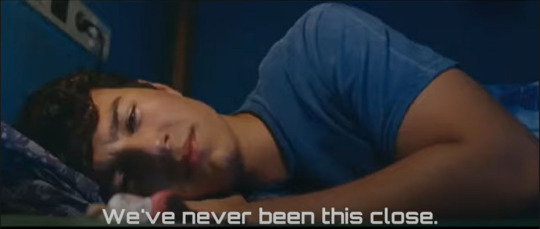
God, look at that FOV, the (lack of) focus, the size difference, the subtitle, that face… Fuck.
…but it had to be ruined because – SPOILER – the dumb, lusting teen boy couldn’t see what was literally right in front of him for years until the end of the third movie! Plus, being steps away from a married couple of hotheads, who knows what kind of fights or arguments they’d get into? Are you telling me you wouldn’t want a scene like this again?

That stick is actually way too big to really be a toothpick (or is it?), but I’m not mad. We stan a brave queen.
B. The Will-They/Won’t-They Duo
I’m thinking of making Mario and Melanie into each other, too, as irony based on how much they hated each other for most of the last movie. She stole his phone (and everything else) and then his heart. (lol, I’m so sorry.) Maybe she’d still have some fancies for Felix but then sees that Mario has redeeming qualities of his own, on top of a rich background (not that it matters, but money is cool). My main focus in mind was just for Ella to be shrunken, with Melanie being the supportive gal pal, but given she’s new and hasn’t yet been small herself, maybe this would be the time.
I think Mario would’ve totally gotten over the prepubescent power drive from the first movie by now and certainly no longer has even the slightest grudge over Melanie causing and/or catalyzing chaos that could be played with if he had to deal with a small her. Surely.
C. The Bros in the Back
Would it be too presumptive to make Chris and Robert maybe gay for each other… or even absolutely the opposite? I respect a strong friendship and/or bromance, and LGBTQ+ representation is always a win, too. But for either, I don’t want to do anything “just because” or because it’s “(not) woke;” it should add to the story and have meaning. After all, a situation like “Dude, I love you, and I’ll love you forever, but not like that” could be just as cute. We stan supportive introspection between men. Bros before hoes, you know?
Though, maybe they’re likely the great masterminds to figure out what/why the plot thickens. They seem like the most intelligent of the squad, even if they were only henchmen at the beginning.
D. The Elders
I guess it would only make sense for Schmitty or Felix’s parents to get shrunk again, as is tradition. Maybe the former would be due to considering retirement from teaching/being principal.
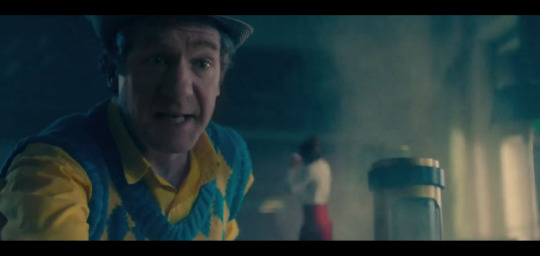
I’d do anything to get Hausmeister Michalsky protecting her with his hat again.
As for the parents, it’d likely be a wrong place, wrong time situation. I don’t know.
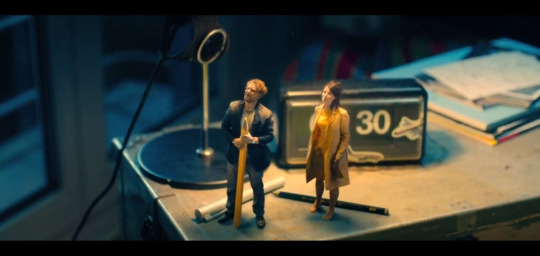
Unless Sandra and Peter were snooping again, I doubt Felix would willingly do this to them.
Overarching Themes
Aging for Innuendo
Regarding all this, I do know that I’d like to make the story time-skipped a bit, making the kids at least U.S.-adult-aged for my own sake. I am a fan of double entendre, cheekiness, and raw emotion, so I’d love to spill them all over a story or characterization if fitting. However, I couldn’t bear to see or write any kiddos explicitly going through with any entailed implications – that shit’s illegal, lmao. Plus, why even risk something like that when an age-up takes away all the trouble, thus not make any innuendos or ideas awkward?
In a fun way, small or not, wouldn’t seeing the gang party together with real man’s drinks or whatever be cool? What about someone getting turnt on a thimble’s worth or a gummy bear’s paw?

The cups have been used. That’s adorable. +10 points for realism.
In a trash way, if a greater trust was built between Felix and Ella to wear one would suggest taking a bath with the other, and a small Ella floating in the soap ocean bumps into something on her back, only to realize all of Felix’s (normal) limbs are out of distance, in view, and/or just not able to touch her yet he’s blushing, then what would that imply? (It could be nothing, but it could be something.)
Why, Though?
I just can’t figure out a supposedly new catalyst for the ultimate shrinking plot point, mostly due to the main chaos causers, aka the ancient magic users that tackled the school, being sent to the Shadow Realm in the last movie. I do have some ideas, but I’d always love to hear more.

*Oh, Hulda Stechbarth… Bless this crazy bitch, lol.
Throughout the series, people going to our wanting to go to America was frequently brought up. Maybe, like Ilvermorny is to Hogwarts, maybe there’s a (maybe American) (college?) counterpart to the Leonhard school that is interested in the kids. Could the sudden shrinking be a part of the admissions or entrance exam process, such as figuring out how to reverse it? I can’t imagine someone still wanting to go to a school that risked its prospective students’ lives, but who knows? Still, I’m sure the friends would debate whether going overseas for any school is the best idea, especially with the ridiculous costs. Could differing views cause tension?
What if one between Felix and Ella considered it, but the other didn’t, and a coincidentally timed dream for them to stay together – not unlike Minami-kun no Koibito, if you know it – made one of them small with no way for Felix to turn the affected back to normal (due to the tests)? What if people start believing that Felix is intentionally not transforming people back, despite not being at fault but trying his best the whole time?
I suppose another villain is cool, too, but what would be their spite? Would Felix getting all of Leonhard’s power be enough to spark something?
***
I want to do this, but I rarely finish anything now. I can’t even think of a proper plot! Maybe putting this out into the world will inspire myself or even someone else to give a fanfic a shot or at least expose this series to our fandom more (like when I found Dwarfina and blushed at every scene, despite not knowing a lick of Tagalog)!
The third movie pretty much just released, so I only see it (legally) able for streaming (via renting or buying) via Vudu and Amazon Prime Video (in the U.S.). It maybe more widespread in Germany where it was made. (Though, VPNs do exist…) But the first and second movies can be bought or rented from multiple sources, surely.
In any case, let me know what y’all think, and feel free to share your thoughts!
9 notes
·
View notes
Text
youtube
Watch the American Climate Leadership Awards 2024 now: https://youtu.be/bWiW4Rp8vF0?feature=shared
The American Climate Leadership Awards 2024 broadcast recording is now available on ecoAmerica's YouTube channel for viewers to be inspired by active climate leaders. Watch to find out which finalist received the $50,000 grand prize! Hosted by Vanessa Hauc and featuring Bill McKibben and Katharine Hayhoe!
#ACLA24#ACLA24Leaders#youtube#youtube video#climate leaders#climate solutions#climate action#climate and environment#climate#climate change#climate and health#climate blog#climate justice#climate news#weather and climate#environmental news#environment#environmental awareness#environment and health#environmental#environmental issues#environmental justice#environment protection#environmental health#Youtube
14K notes
·
View notes
Text
it’s t-t-t-t-time for another newt bae-science fic rec extravabonanza! same rules, same boys, same bullshit! let’s get into it:
a beginning; a second chance by @dykesword
other newt and i have a long and intricate ritualistic battle to become the alpha newt, but i gotta give credit where it’s due. if you like to annotate your books for fun, this fic will give you a looooong comment you’ll want to write, and for good reason! there’s a lot of really well done metaphor and character detail in here, while still keeping a very soft, melancholy but with a hopeful edge tone. and also, like, the care and detail in which newt’s mental state in the aftermath of the precursors’ abuse is depicted is so so good, and delightful to read
husbandly duties by @kingeiszler
i am soooo biased with this one bc technically it was made for me but GODDAMN it’s good. this shit has everything: gottlieb trio sibling dynamics, vanessa in giant femme earrings, hermann yearning, newt and karla infodumping together, newt’s terrible and accurate gaydar, gay crime, the newmann dynamic and why it works boiled down to its bare essentials, pride and prejudice glasses touch, and neon green acrylics. required reading for the vanessaverse
Say That Again by @robertfrobisherslover
WOOF. if you like mutual pining and lack of communication from men with rocks for their emotional processing centers, and guncle (gay uncle) newt and hermann and KILLER artsy sex scenes, and themes of words unsaid in a story about LANGUAGE..... oogoogogoogouhufug. the writing style is clear and well paced, i LOVE little mako’s scene she’s such a cutie, and there’s like. a line. that’s a play on the whole “it’s always been you” trope. that lives in my mind rent free forever.
speak right to my heart without saying a word by @thekaidonovskys
i’m just gonna paste the comment i left on it here, because that sums up what is so absolutely incredible about this fic the best:
so sometimes you stumble on a piece of fiction that you add to your little collection of stuff you would show a person if you wanted them to understand a part of you that you can't quite explain eloquently, or it would take too long, etc etc, and i've never really found something like that for my autism until now, which, like, poggers. and i'll be as straight up as i can while still being the biggest lesbian in the great state of ohio (not a hard feat but alan invented computers so i love continuing on the autistic tradition of being a living miracle), the chameleon effect hit me like a mack truck. catholic school in the deep south is the most potent and effective form of ABA therapy imaginable :/. so sometimes i wonder what i would be like if i didn't have such a strong ability to pass, and here's where we finally get to the part of this comment where i just vomit compliments at you: you nailed it. you got it. i don't know if you're on the spectrum, but either way, well fucking done. trauma therapy research talks a lot about healing fantasies, which are fantasies, usually in the form of daydreams, that abused/neglected/traumatized/etc people create that directly address a struggle they have and take the form of a scenario in which that struggle is helped in some way. it could be an abusive parent repenting and showering them with the love they never had, or someone finding them during a panic attack and somehow knowing how best to comfort them without having to ask, or being intimate with someone and having a scar or physical deformity they've been shamed for be given attention and care. and i think you have created the ultimate perfect healing fantasy for autistic people, or at least those with """"high functioning"""" autism. it has a character who is visibly and undeniably on the spectrum having the pain and trauma going through life like that causes being acknowledged and validated, they are purposefully paid attention to because person b genuinely likes them and wants to understand and respect who they are and how they function in the world, and thus get The Mortifying Ordeal of Being Known as well as the eventual rewards of being loved, person b makes a genuine effort to help teach them social skills in a way they can understand and learn through and is there for them when these skills are being practiced, their space and boundaries are respected but they aren't infantilized or thought of as an emotionless robot, and they receive love and comfort on their own terms not despite of but because of who they are, even specifically being asked not to change the way they are because that way is lovable. they are openly desired. writing is my fucking JOB and it's still difficult to put into words how much you got 100000% right about the dream with this fic. i have been in the EXACT and i mean EXACT same situation as hermann when he asked newt if it was his personality itself that made people not like him, because i deadass made a spreadsheet of all my personality attributes i thought could be preventing me from making friends in college, and then asked my fellow nd friend to see if there was anything i was missing. so i guess what i'm trying to say is that this amazing, and i'm bookmarking it and putting it on my next fic rec post, and maybe one day way way in the future if i ever get a partner i want to explain the whole autism thing to, i'm gonna have them read this.
The Facts With Newton Geiszler, PhD by what_alchemy (NSFW)
storytime: i read this fic a few years ago, completely forgot the title and author, and ended up thinking about the part where hermann admits to having fucked a trailer hitch when he was a teenager, at least once a week. last november, i say to my friend samara on twitter, head of the BSHCU (buttslut hermann cinematic universe), hey this seems like something you’d have read, do you remember a fic where... and samara says FUCK i do know what you’re talking about lemme find it. so if the fact that i have been looking for this fic for like, two years, and that it contains a moment so iconic all i had to say is, “hermann says he fucked a trailer hitch” and she IMMEDIATELY knew what i was talking about, does not convince you to read this... go back to catholic school i guess.
Feeling Blue by TempusPetrichor
fics where newt goes back to work as a biologist, especially a xenobiologist, post pru are really interesting, and usually have something neat to say about recovery, how it isn’t linear, how it often involves us returning to things we love for comfort, etc. this one sure does! some good emotional and physical h/c, LOVE the use of the ghost drift, and it’s always fun to see post pru fics use dialogue very obviously taken from dbt, trauma-specific therapeutical texts, and anything that shows the author has experience with, or did their research on, ptsd therapies.
You’re Everyone That Ever Cared by KlavierWrites
you know a fic is good when it’s an only 9k slowburn and still manages to reach infinite regress levels of are you fucking KIDDING GO TO THERAPY. newt “acts of service” geiszler may have a little misplaced misogyny due to his broken woman-centric gaydar. as a treat. the fucking. post-drift scene where hermann subtextually screams “LOOK IN OUR BRAINS YOU FUCK I’M IN LOVE WITH YOU I JUST HAVE AUTISM AND CAREER IN STEM DISORDER” is soooooo. god just hermann in general in that scene is great. if you like classic mid 2010s era newmann, ghost drift romance, and good ole mutual pining, this is a treat.
Baby, You're Hotter than my Bunsen Burner by SkySongMA
moronosexual hermann representation is something that can actually be so personal
Times of Stress by RadioMoth
the boys are processinggggggg. man what a good, quick and powerful punch to the gut. if you like post-pr1 catharsis and physical h/c, AND are the one friend that likes to comment at the end of the movie that hey newt got beat the fuck UP, check this one out.
black tea by @faggotcas
okay first of all, god fucking tier url, lee. second of all, food as a love language is my SHIT. i love the very slow relationship development here, where you see them making a genuine effort to get along and that in turn leading to feelings reigniting. it’s such a sweet little moment of a fic, with a nice atmosphere and tone to fit it
now here’s the part where i usually drop my latest fic, but i haven’t written one this month because i’ve been busy launching an audio drama! you can find it here, it’ll be right up your alley if you like cryptids and gay scientists and enemies to lovers and good ole americana, but since this is a newmann post, i’m gonna recommend the pacific rim audio drama duology i did a while back! part one is called conversations from the brink, and it’s a little slice of the pr3 we better fucking get from streaming that godawful looking anime. love and lesbians to everyone ❤️
52 notes
·
View notes
Text
year in review tag :)
I was tagged by my dears @summerygubler and @idmakeitbehave and it warms my heart so much that you guys tagged me!! thank you <3
first creation + most recent creation of 2020
okee so my first creation was Unwanted Matchmaker, yall when i tell you this idea came to me in a dream AHAHA, it was so weird, i was reading a bunch of fanfiction and NEVER had the intentions to write anything bc ya girl is insecure about her writing skills, but then i was like “why hasn’t anyone done this yet” and i just wrote it. and now here we are. my most recent creation is Christmas Miracles which i wasn’t sure i loved yet, but the feedback blew me away, so glad you guys enjoyed it.
one of your favourite creations from 2020
i have a very special place in my heart for Mon Cher, it was just so super sweet to write
a creation you’re really proud of
i’m very proud of All That Matters and Here For You because they really challenged me to write angst and i was really proud that i was able to portray post prison spencer in ways that humanize him.
a new style you tried this year & a fic that uses it
not exactly a new style, but i had never written an alternate reality before and was worried people wouldn’t receive it (but yall did), so Be Careful What You Wish For
a creation that took you forever
oh my goodness all of them, all of them take me DAYS to write.
your creation from 2020 that received the most notes
so it’s been really close between Unwanted Matchmaker and Operation Make Believe for days but finally Operation Make Believe has surpassed UM!!! (i was rooting for it if you couldn’t tell ahaha)
a creation you think deserved more notes
the number of notes isn’t something i focus on tbh (i’m not saying that to be humble, i promise, i do this because i enjoy it), but i knew going into a series, most chapters wouldn’t get the love they deserved so probably The Receptionist and the Profiler
a new fandom you joined and a creation you made for it
well technically criminal minds is the new fandom ahaha
a creation you made that breaks your heart
Oh lordy lord, Twin Flames it was difficult to write Spencer so heartbroken but i poured every bit of myself into that fic and i love it for that.
a ‘simple’ creation that you really love
i think it’s a tie between Shades and Leather Jacket, they’re both on the shorter side and definitely more playful than usual. they were so adorable to write and i thought they were good representations of spencer in general hehehe
a creation that was inspired by another one
oh my gosh, Operation Make Believe was requested but i totally thought of one of my favorite works THAT I CANT FIND TO SAVE MY LIFE i wish i could credit the author, but it was also an undercover fic where spencer and reader were a married couple and i was obsessed with it for WEEKS before i even published my first fic
a favourite creation created by someone else
ohmygoshohmygoshohmygosh too many, toooooo too many but some off the top of my head: this vast empty space by my queen @literaila (AND EVERYTHING ELSE), everything happens for a reason and fun fun arcade by @spacedikut (AND EVERYTHING ELSE OMG), the star puzzle by @halloweenhoneylover (this fic lives in my head RENT FREE I TELL YOU), of courseee Teach Me Something I Don’t Know by the lovely @homoose (FEAR NOT I HAVE SO MANY MORE I WILL PROBABLY COMPILE A LIST)
some of your favourite content creators from this year (so many omg)
@spacedikut @hercleverboy @brywrites @homoose @literaila @jpegjade@idmakeitbehave @mggpleasedontlookhere @reidscanehand @zhuzhubii @psychedellic-phase @bau-wife @criminalmindzjunkie @thespringpriestess @imagining-in-the-margins
i’d also like to write a specific thank you note to the one and only @jpegjade. she’s a huge, huge part of why i’ve published so much this year, i wouldn’t have published 0.1 of these fics without her. she’s helped me with every idea and every fic, i couldn’t have done it without you babe! YOU ARE SO LOVED AND APPRECIATED by me! EVERYONE PLEASE GO READ THE ENTIRE MASTERLIST
tagging anyone who wants to do this, anyone who was tagged, i love yall so much
#year in review tag#i will probably create a list of my fav fics over the year#but im too lazy#lol how can yall stand me#I LOVE EACH AND EVERY SINGLE ONE OF YOU
39 notes
·
View notes
Text
So 6-3 months ago I had a huge hyperfixtation on two females that never ever met or had screen time together. Nobody even acknowledges them. But I do because they are a Angel & Demon from a anime that boys obsess over. Dragonball super.
Vados is a angel deity that trains another another deity be a God Of Destruction. Angels can't fight or they will be erased. Permanently thanos snapped. Anything that goes against Angel code *BLOOP* they are gone forever erased or their identity taken as a angel and live as a mortal for the rest of their lives. Of course an Angel's feelings have to stay neutral, they can't side on Good or Evil. They can't interfere with mortal problems. She destroyed a world by Lord Champa's orders without hesitation. WIth only a tap of her staff.
Towa is a Demon from the demon realm. She's a scientist and a sister of the demon king Dabura. She created Mira which she calls a husband & created a kid which is their son. I like the idea because they are expirementations nothing else. She's a villian of course. Towa's main reason for wanting to unite Demon Realm with the rest of the universe is create what she poetically refers to as a garden of evil full of rage and pain the very thought of which she describes as beautiful, demonstrating Towa is sadist at heart.
Soooo I was like...."what if they met" in a Sapphire & Ruby way. As in like they fused & gosh golly they felt something a angel & demon never felt before. Of course by potara Fusion.
Which led to this.


I fell in love with this design & their customized abilities.
Another thing
Their height & size difference
It's like Haru & Legoshi, Lady Dimitrescu & any normal sized person. I love me a good ol size & height difference relationship. To put icing on the top, reminder: they are a Angel & Demon.
How this all started? I purchased DragonBall Xenoverse 2 & decided to play in Camera mode with Vados & Towa because they looked too similar & BAM I saw their height & size & I'm just like-

I'm literally writing whole bigass essays & presenting them to the imaginary people in my head on why this would be a good ship & a good wlw representation in DragonBall Anime. Yeah sure theirs Kale & Caulifla but nobody likes them.
As for me, this rare pair ship lives rent free in my head.
I have ALOT to tell but my mind can't write them all down rn.
5 notes
·
View notes
Text
Rules: list your favorite characters from 10 different fandoms and then tag 10 people.
I was not tagged but I'm ready to scream about some faves! This was so hard because I love so many people from so many things! So this is just a small sample and just for tv. In no particular order, because I go feral for them all in equal amounts.
Loki. My mischief making fave who, like most of my faves needs some love and hugs but also a Gibs-slap upside the head every once in awhile. Also, Tom Hiddleston is a literal angel and Disney Prince brought to life and it is a joy to watch him bring Loki to life.
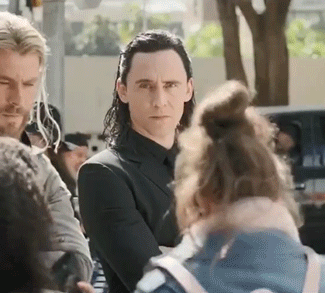
Matt Murdock. This man deserves nothing but soft happiness and a good night's sleep for the rest of his life. Charlie Cox is also a doll.

Luke Patterson. Look, I know Julie and the Phantoms is a kids show but it is just so ernest and lovely. I am always a sucker for seeing good representations of non-toxic masculinity especially in character types that are usually rife with toxic tropes.

Rory Williams Pond. The man who waited. An epic love story through time. What else is there to say? Oh right! He punched Hitler.

Burton Guster. Funny, neurotic, and always bringing the plot together. Successful pharmaceutical rep, part-time detective, and one nerdy half of a favorite duo.
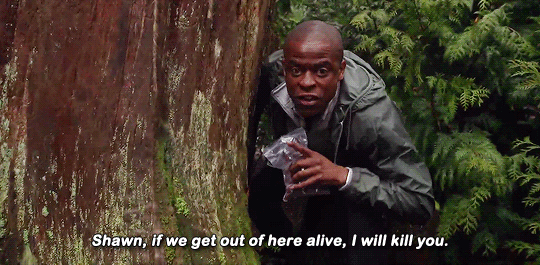
Barry Allen. Giant heart. Brilliant mind. Literal ray of sunshine. I'm including a gif with him and another fave from that fandom because him and Kara are sunshine brotp goals.
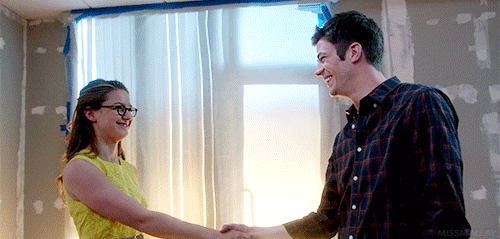
Yusef Al-Kaysani. Also a literal ray of sunshine and love with a side of "If you shoot my husband I have no choice but to destroy you." This movie lives in my head rent free and I can't wait for the sequel.
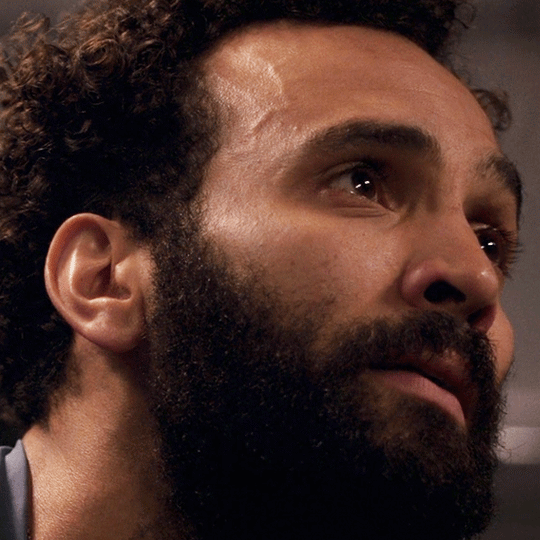
Chidi Anagonye. My overthinking anxiety bro. So soft and sweet and kind (to a fault, but he's working on it, okay?) Plus him and Eleanor are one of my favorite OTPs.

Bucky Barns. He may also be MCU but it's from a different movie set from Loki so technically it's not cheating. But if anyone needs all the love and hugs and cuddles and softness it's our favorite murder baby, Bucky. Yes, I am still and forever salty about Endgame BUT I cannot stress enough how excited I am for Falcon and Winter Soldier because the Bucky/Sam dynamic is one of my favorites.

Alex Manes & Michael Guerin. This technically IS cheating because I cannot pick just one. While Alex and Michael are both amazing people, it's when they come together that they make themselves better. Cosmic clowns for life!

6 notes
·
View notes
Text
Ok.. So i took notes while listening to #Lover and here are my first impression (PART 1)
I FORGOT THAT YOU EXISTED
LOVED THIS SONG FROM THE FIRST BEAT! HER GIGGLES! I CANT !
Some fav lyrics "free rent living in my mind" "and i thought that it would kill me but it didn't" "it isn't love it isn't hate it's just indifference"
Actual representation of me while listening to this song
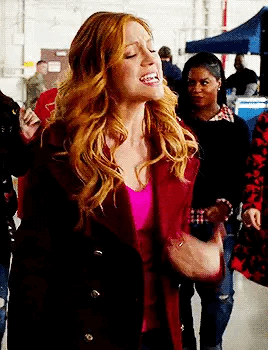
CRUEL SUMMER
THE BEAT, THE LYRICS, HER VOICE.. PERFECT!
Some fav lyrics “no rules in breakable heaven” “i dont want to keep secrets just to keep you”
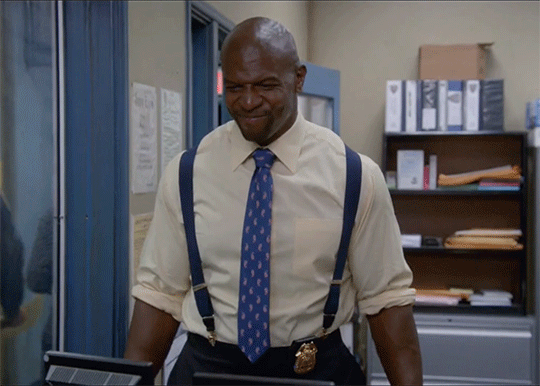
LOVER
Well, I claim this song as soundtrack for my relationship.. <3
“ Have I known you 20 seconds or 20 years?” “Can I go where you go? Can we always be this close? Forever and ever” “I’ve loved you 3 summers now honey but I want them all”
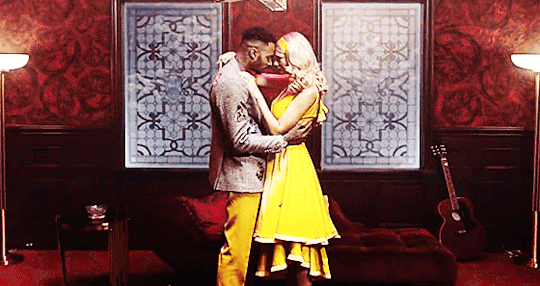
THE MAN
WOW MISS SWIFT YOU SNAPPED!
“wondering if i’d get there quicker if I was a man” “they wouldn’t shake their heads and question how much of this I deserve”
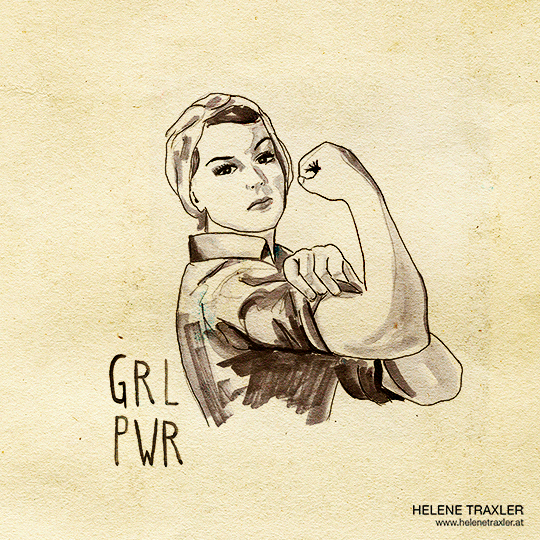
THE ARCHER
Well, not much of a first impression, but we all know the power of this song.. Track 5 after all
“I’ve got a hundred thrown out speeches I almost said to you”
I THINK HE KNOWS
A BOP! Great song to strut on the streets.
“He got my heartbeat skipping down 16th Avenue”
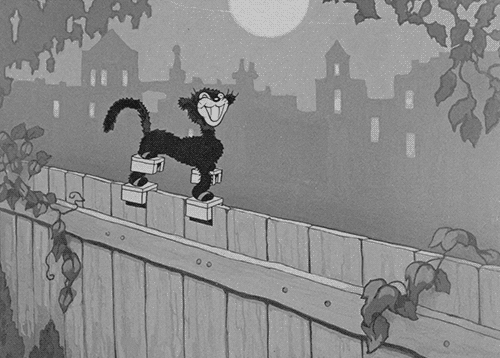
MISS AMERICANA & THE HEARTBREAK PRINCE
OMG! Her voice! The cheerleader scream! The beat! I love everything about this song! I dont know why I makes me wanna be driving somewhere.
“I counted days, I counted miles to see you there, to see you there, to see you there, and now the storm is coming but it’s you and me, that’s my whole world”

PAPER RINGS
SHOOK FROM THE FIRST BEAT! NOT AT ALL WHAT I WAS EXPECTING AND I LOVE IT SOOO MUUUUCH!!! Cant stop dancing! Fake tambourine on the hips and all..
“I like shiny things, but I'd marry you with paper rings
Uh huh, that's right
Darling, you're the one I want, and
I hate accidents except when we went from friends to this
Uh huh, that's right
Darling, you're the one I want
In paper rings, in picture frames, in dirty dreams
Oh, you're the one I want”

CORNELIA STREET
THE LYRICS! That’s it, I am speechless! Oh and obviously I wanna go to NYC.
“we were a fresh page on the desk filling in the blanks as we go as if the streetlights pointed in an arrowhead leading us home” “and baby I get mystified by how this city screams your name” “barefoot in the kitchen, sacred new beginnings that became my religion, listen, I hope I never lose you”

5 notes
·
View notes
Text
The Shareware Scene, Part 5: Narratives of DOOM
Let me begin today by restating the obvious: DOOM was very, very popular, probably the most popular computer game to date.
That “probably” has to stand there because DOOM‘s unusual distribution model makes quantifying its popularity frustratingly difficult. It’s been estimated that id sold 2 to 3 million copies of the shareware episodes of the original DOOM. The boxed-retail-only DOOM II may have sold a similar quantity; it reportedly became the third best-selling boxed computer game of the 1990s. But these numbers, impressive as they are in their own right, leave out not only the ever-present reality of piracy but also the free episode of DOOM, which was packaged and distributed in such an unprecedented variety of ways all over the world. Players of it likely numbered well into the eight digits.
Yet if the precise numbers associated with the game’s success are slippery, the cultural impact of the game is easier to get a grip on. The release of DOOM marks the biggest single sea change in the history of computer gaming. It didn’t change gaming instantly, mind you — a contemporaneous observer could be forgiven for assuming it was still largely business as usual a year or even two years after DOOM‘s release — but it did change it forever.
I should admit here and now that I’m not entirely comfortable with the changes DOOM brought to gaming. In fact, for a long time, when I was asked when I thought I might bring this historical project to a conclusion, I pointed to the arrival of DOOM as perhaps the most logical place to hang it up. I trust that most of you will be pleased to hear that I no longer feel so inclined, but I do recognize that my feelings about DOOM are, at best, conflicted. I can’t help but see it as at least partially responsible for a certain coarsening in the culture of gaming that followed it. I can muster respect for the id boys’ accomplishment, but no love. Hopefully the former will be enough to give the game its due.
As the title of this article alludes, there are many possible narratives to spin about DOOM‘s impact. Sometimes the threads are contradictory — sometimes even self-contradictory. Nevertheless, let’s take this opportunity to follow a few of them to wherever they lead us as we wrap up this series on the shareware movement and the monster it spawned.
3D 4EVA!
The least controversial, most incontrovertible aspect of DOOM‘s impact is its influence on the technology of games. It was nothing less than the coming-out party for 3D graphics as a near-universal tool — this despite the fact that 3D graphics had been around in some genres, most notably vehicular simulations, almost as long as microcomputer games themselves had been around, and despite the fact that DOOM itself was far from a complete implementation of a 3D environment. (John Carmack wouldn’t get all the way to that goal until 1996’s Quake, the id boys’ anointed successor to DOOM.) As we’ve seen already, Blue Sky Productions’s Ultima Underworld actually offered the complete 3D implementation which DOOM lacked twenty months before the latter’s arrival.
But as I also noted earlier, Ultima Underworld was complex, a little esoteric, hard to come to terms with at first sight. DOOM, on the other hand, took what the id boys had started with Wolfenstein 3D, added just enough additional complexity to make it into a more satisfying game over the long haul, topped it off with superb level design that took full advantage of all the new affordances, and rammed it down the throat of the gaming mainstream with all the force of one of its coveted rocket launchers. The industry never looked back. By the end of the decade, it would be hard to find a big boxed game that didn’t use 3D graphics.
Many if not all of these applications of 3D were more than warranted: the simple fact is that 3D lets you do things in games that aren’t possible any other way. Other forms of graphics consist at bottom of fixed, discrete patterns of colored pixels. These patterns can be moved about the screen — think of the sprites in a classic 2D videogame, such as Nintendo’s Super Mario Bros. or id’s Commander Keen — but their forms cannot be altered with any great degree of flexibility. And this in turn limits the degree to which the world of a game can become an embodied, living place of emergent interactions; it does no good to simulate something in the world model if you can’t represent it on the player’s screen.
3D graphics, on the other hand, are stored not as pixels but as a sort of architectural plan of an imaginary 3D space, expressed in the language of mathematics. The computer then extrapolates from said plan to render the individual pixels on the fly in response to the player’s actions. In other words, the world and the representation of the world are stored as one in the computer’s memory. This means that things can happen there which no artist ever anticipated. 3D allowed game makers to move beyond hand-crafted fictions and set-piece puzzles to begin building virtual realities in earnest. Not for nothing did many people refer to DOOM-like games in the time before the term “first-person shooter” was invented as “virtual-reality games.”
Ironically, others showed more interest than the id boys themselves in probing the frontiers of formal possibility thus opened. While id continued to focus purely on ballistics and virtual violence in their extended series of Quake games after making DOOM, Looking Glass Technologies — the studio which had previously been known as Blue Sky Productions — worked many of the innovations of Ultima Underworld and DOOM alike into more complex virtual worlds in games like System Shock and Thief. Nevertheless, DOOM was the proof of concept, the game which demonstrated indubitably to everyone that 3D graphics could provide amazing experiences which weren’t possible any other way.
From the standpoint of the people making the games, 3D graphics had another massive advantage: they were also cheaper than the alternative. When DOOM first appeared in December of 1993, the industry was facing a budgetary catch-22 with no obvious solution. Hiring armies of artists to hand-paint every screen in a game was expensive; renting or building a sound stage, then hiring directors and camera people and dozens of actors to provide hours of full-motion-video footage was even more so. Players expected ever bigger, richer, longer games, which was intensely problematic when every single element in their worlds had to be drawn or filmed by hand. Sales were increasing at a steady clip by 1993, but they weren’t increasing quickly enough to offset the spiraling costs of production. Even major publishers like Sierra were beginning to post ugly losses on their bottom lines despite their increasing gross revenues.
3D graphics had the potential to fix all that, practically at a stroke. A 3D world is, almost by definition, a collection of interchangeable parts. Consider a simple item of furniture, like, say, a desk. In a 2D world, every desk must be laboriously hand-drawn by an artist in the same way that a traditional carpenter planes and joins the wood for such a thing in a workshop. But in a 3D world, the data constituting the basic form of “desk” can be inserted in a matter of seconds; desks can now make their way into games with the same alacrity with which they roll off of an IKEA production line. But you say that you don’t want every desk in your world to look exactly the same? Very well; it takes just a few keystrokes to change the color or wood grain or even the size of your desk, or to add or take away a drawer. We can arrive at endless individual implementations of “desk” from our Platonic ideal with surprising speed. Small wonder that, when the established industry was done marveling at DOOM‘s achievements in terms of gameplay, the thing they kept coming back to over and over was its astronomical profit margins. 3D graphics provided a way to make games make money again.
So, 3D offered worlds with vastly more emergent potential, made at a greatly reduced cost. There had to be a catch, right?
Alas, there was indeed. In many contexts, 3D graphics were right on the edge of what a typical computer could do at all in the mid-1990s, much less do with any sort of aesthetic appeal. Gamers would have to accept jagged edges, tearing textures, and a generalized visual crudity in 3D games for quite some time to come. A freeze-frame visual comparison with the games the industry had been making immediately before the 3D revolution did the new ones no favors: the games coming out of studios like Sierra and LucasArts had become genuinely beautiful by the early 1990s, thanks to those companies’ rooms full of dedicated pixel artists. It would take a considerable amount of time before 3D games would look anywhere near this nice. One can certainly argue that 3D was in some fairly fundamental sense necessary for the continuing evolution of game design, that this period of ugliness was one that the industry simply needed to plow through in order to emerge on the other side with a whole new universe of visual and emergent possibility to hand. Still, people mired in the middle of it could be forgiven for asking whether, from the evidence of screenshots alone, gaming technology wasn’t regressing rather than progressing.
But be that as it may, the 3D revolution ushered in by DOOM was here to stay. People would just have to get used to the visual crudity for the time being, and trust that eventually things would start to look better again.
Playing to the Base
There’s an eternal question in political and commercial marketing alike: do you play to the base, or do you try to reach out to a broader spectrum of people? The former may be safer, but raises the question of how many more followers you can collect from the same narrow slice of the population; the latter tempts you with the prospect of countless virgin souls waiting to embrace you, but is far riskier, with immense potential to backfire spectacularly if you don’t get the message and tone just right. This was the dichotomy confronting the boxed-games industry in the early 1990s.
By 1993, the conventional wisdom inside the industry had settled on the belief that outreach was the way forward. This dream of reaching a broader swath of people, of becoming as commonplace in living rooms as prime-time dramas and sitcoms, was inextricably bound up with the technology of CD-ROM, what with its potential to put footage of real human actors into games alongside spoken dialog and orchestral soundtracks. “What we think of today as a computer or a videogame system,” wrote Ken Williams of Sierra that year, “will someday assume a much broader role in our homes. I foresee a day when there is one home-entertainment device which combines the functions of a CD-audio player, VCR, videogame system, and computer.”
And then along came DOOM with its stereotypically adolescent-male orientation, along with sales numbers that threatened to turn the conventional wisdom about how well the industry could continue to feed off the same old demographic on its head. About six months after DOOM‘s release, when the powers that were were just beginning to grapple with its success and what it meant to each and every one of them, Alexander Antoniades, a founding editor of the new Game Developer magazine, more fully articulated the dream of outreach, as well as some of the doubts that were already beginning to plague it.
The potential of CD-ROM is tremendous because it is viewed as a superset not [a] subset of the existing computer-games industry. Everyone’s hoping that non-technical people who would never buy an Ultima, flight simulator, or DOOM will be willing to buy a CD-ROM game designed to appeal to a wider audience — changing the computer into [an] interactive VCR. If these technical neophytes’ first experience is a bad one, for $60 a disc, they’re not going to continue making the same mistake.
It will be this next year, as these consumers make their first CD-ROM purchases, that will determine the shape of the industry. If CD-ROM games are able to vary more in subject matter than traditional computer games, retain their platform independence, and capture new demographics, they will attain the status of a new platform [in themselves]. If not, they will just be another means to get product to market and will be just another label on the side of a box.
The next couple of years did indeed become a de-facto contest between these two ideas of gaming’s future. At first, the outreach camp could point to some notable successes on a scale similar to that of DOOM: The 7th Guest sold over 2 million copies, Myst sold an extraordinary 6 million or more. Yet the reality slowly dawned that most of those outside the traditional gaming demographic who purchased those games regarded them as little more than curiosities; most evidence would seem to indicate that they were never seriously played to a degree commensurate with their sales. Meanwhile the many similar titles which the industry rushed out in the wake of these success stories almost invariably became commercial disappointments.
The problems inherent in these multimedia-heavy “interactive movies” weren’t hard to see even at the time. In the same piece from which I quoted above, Alexander Antoniades noted that too many CD-ROM productions were “the equivalent of Pong games with captured video images of professional tennis players and CD-quality sounds of bouncing balls.” For various reasons — the limitations inherent in mixing and matching canned video clips; the core limitations of the software and hardware technology; perhaps simply a failure of imagination — the makers of too many of these extravaganzas never devised new modes of gameplay to complement their new modes of presentation. Instead they seemed to believe that the latter alone ought to be enough. Too often, these games fell back on rote set-piece puzzle-solving — an inherently niche activity even if done more creatively than we often saw in these games — for lack of any better ideas for making the “interactive” in interactive movies a reality. The proverbial everyday person firing up the computer-cum-stereo-cum-VCR at the end of a long workday wasn’t going to do so in order to watch a badly acted movie gated with frustrating logic puzzles.
While the multimedia came first with these productions, games of the DOOM school flipped that script. As the years went on and they too started to ship on the now-ubiquitous medium of CD-ROM, they too picked up cut scenes and spoken dialog, but they never suffered the identity crisis of their rivals; they knew that they were games first and foremost, and knew exactly what forms their interactivity should take. And most importantly from the point of view of the industry, these games sold. Post-1996 or so, high-concept interactive movies were out, as was most serious talk of outreach to new demographics. Visceral 3D action games were in, along with a doubling-down on the base.
To blame the industry’s retrenchment — its return to the demographically tried-and-true — entirely on DOOM is a stretch. Yet DOOM was a hugely important factor, standing as it did as a living proof of just how well the traditional core values of gaming could pay. The popularity of DOOM, combined with the exercise in diminishing commercial returns that interactive movies became, did much to push the industry down the path of retrenchment.
The minor tragedy in all this was not so much the end of interactive movies, given what intensely problematic endeavors they so clearly were, but rather that the latest games’ vision proved to be so circumscribed in terms of fiction, theme, and mechanics alike. By late in the decade, they had brought the boxed industry to a place of dismaying homogeneity; the values of the id boys had become the values of computer gaming writ large. Game fictions almost universally drew from the same shallow well of sci-fi action flicks and Dungeons & Dragons, with perhaps an occasional detour into military simulation. A shocking percentage of the new games being released fell into one of just two narrow gameplay genres: the first-person shooter and the real-time-strategy game.
These fictional and ludic genres are not, I hasten to note, illegitimate in themselves; I’ve enjoyed plenty of games in all of them. But one craves a little diversity, a more vibrant set of possibilities to choose from when wandering into one’s local software store. It would take a new outsider movement coupled with the rise of convenient digital distribution in the new millennium to finally make good on that early-1990s dream of making games for everyone. (How fitting that shaking loose the stranglehold of DOOM‘s progeny would require the exploitation of another alternative form of distribution, just as the id boys exploited the shareware model…)
The Murder Simulator
DOOM was mentioned occasionally in a vaguely disapproving way by mainstream media outlets immediately after its release, but largely escaped the ire of the politicians who were going after games like Night Trap and Mortal Kombat at the time; this was probably because its status as a computer rather than a console game led to its being played in bedrooms rather than living rooms, free from the prying eyes of concerned adults. It didn’t become the subject of a full-blown moral panic until weirdly late in its history.
On April 20, 1999, Eric Harris and Dylan Klebold, a pair of students at Columbine High School in the Colorado town of the same name, walked into their school armed to the teeth with knives, explosives, and automatic weapons. They proceeded to kill 13 students and teachers and to injure 24 more before turning their guns on themselves. The day after the massacre, an Internet gaming news site called Blue’s News posted a message that “several readers have written in reporting having seen televised news reports showing the DOOM logo on something visible through clear bags containing materials said to be related to the suspected shooters. There is no word yet of what connection anyone is drawing between these materials and this case.” The word would come soon enough.
It turned out that Harris and Klebold had been great devotees of the game, not only as players but as creators of their own levels. “It’s going to be just like DOOM,” wrote Harris in his diary just before the massacre. “I must not be sidetracked by my feelings of sympathy. I will force myself to believe that everyone is just a monster from DOOM.” He chose his prize shotgun because it looked like one found in the game. On the surveillance tapes that recorded the horror in real time, the weapons-festooned boys pranced and preened as if they were consciously imitating the game they loved so much. Weapons experts noted that they seemed to have adopted their approach to shooting from what worked in DOOM. (In this case, of course, that was a wonderful thing, in that it kept them from killing anywhere close to the number of people they might otherwise have with the armaments at their disposal.)
There followed a storm of controversy over videogame content, with DOOM and the genre it had spawned squarely at its center. Journalists turned their attention to the FPS subculture for the first time, and discovered that more recent games like Duke Nukem 3D — the Columbine shooters’ other favorite game, a creation of Scott Miller’s old Apogee Software, now trading under the name of 3D Realms — made DOOM‘s blood and gore look downright tame. Senator Joseph Lieberman, a longstanding critic of videogames, beat the drum for legislation, and the name of DOOM even crossed the lips of President Bill Clinton. “My hope,” he said, “[is] to persuade the nation’s top cultural producers to call a cease-fire in the virtual arms race, to stop the release of ultra-violent videogames such as DOOM. Several of the school gunmen murderously mimicked [it] down to the choice of weapons and apparel.”
When one digs into the subject, one can’t help but note how the early life stories of John Carmack and John Romero bear some eerie similarities with those of Eric Harris and Dylan Klebold. The two Johns as well were angry kids who found it hard to fit in with their peers, who engaged in petty crime and found solace in action movies, heavy-metal music, and computer games. Indeed, a big part of the appeal of DOOM for its most committed fans was the sense that it had been made by people just like them, people who were coming from the same place. What caused Harris and Klebold, alone among the millions like them, to exorcise their anger and aggression in such a horrifying way? It’s a question that we can’t begin to answer. We can only say that, unfair though it may be, perceptions of DOOM outside the insular subculture of FPS fandom must always bear the taint of its connection with a mass murder.
And yet the public controversy over DOOM and its progeny resulted in little concrete change in the end. Lieberman’s proposed legislation died on the vine after the industry fecklessly promised to do a better job with content warnings, and the newspaper pundits moved on to other outrages. Forget talk of free speech; there was too much money in these types of games for them to go away. Just ten months after Columbine, Activision released Soldier of Fortune, which made a selling point of dismembered bodies and screams of pain so realistic that one reviewer claimed they left his dog a nervous wreck cowering in a corner. After the requisite wave of condemnation, the mainstream media forgot about it too.
Violence in games didn’t begin with DOOM or even Wolfenstein 3D, but it was certainly amplified and glorified by those games and the subculture they wrought. While a player may very well run up a huge body count in, say, a classic arcade game or an old-school CRPG, the violence there is so abstract as to be little more than a game mechanic. But in DOOM — and even more so in the game that followed it — experiential violence is a core part of the appeal. One revels in killing not just because of the new high score or character experience level one gets out of it, but for the thrill of killing itself, as depicted in such a visceral, embodied way. This does strike me as a fundamental qualitative shift from most of the games that came before.
Yet it’s very difficult to have a reasonable discussion on said violence’s implications, simply because opinions have become so hardened on the subject. To express concern on any level is to invite association with the likes of Joe Lieberman, a politician with a knack for choosing the most reactionary, least informed position on every single issue, who apparently was never fortunate enough to have a social-science professor drill the fact that correlation isn’t causation into his head.
Make no mistake: the gamers who scoff at the politicians’ hand-wringing have a point. Harris and Klebold probably were drawn to games like DOOM and Duke Nukem 3D because they already had violent fantasies, rather than having said fantasies inculcated by the games they happened to play. In a best-case scenario, we can even imagine other potential mass murderers channeling their aggression into a game rather than taking it out on real people, in much the same way that easy access to pornography may be a cause of the dramatic decline in incidents of rape and sexual violence in most Western countries since the rise of the World Wide Web.
That said, I for one am also willing to entertain the notion that spending hours every day killing things in the most brutal, visceral manner imaginable inside an embodied virtual space may have some negative effects on some personalities. Something John Carmack said about the subject in a fairly recent interview strikes me as alarmingly fallacious:
In later games and later times, when games [came complete with] moral ambiguity or actual negativity about what you’re doing, I always felt good about the decision that in DOOM, you’re fighting demons. There’s no gray area here. It is black and white. You’re the good guys, they’re the bad guys, and everything that you’re doing to them is fully deserved.
In reality, though, the danger which games like DOOM may present, especially in the dismayingly polarized societies many of us live in in our current troubled times, is not that they ask us to revel in our moral ambiguity, much less our pure evil. It’s rather the way they’re able to convince us that the Others whom we’re killing “fully deserve” the violence we visit upon them because “they’re the bad guys.” (Recall those chilling words from Eric Harris’s diary, about convincing himself that his teachers and classmates are really just monsters…) This tendency is arguably less insidious when the bad guys in question are ridiculously over-the-top demons from Hell than when they’re soldiers who just happen to be wearing a different uniform, one which they may quite possibly have had no other choice but to don. Nevertheless, DOOM started something which games like the interminable Call of Duty franchise were only too happy to run with.
I personally would like to see less violence rather than more in games, all things being equal, and would like to see more games about building things up rather than tearing them down, fun though the latter can be on occasion. It strikes me that the disturbing association of some strands of gamer culture with some of the more hateful political movements of our times may not be entirely accidental, and that some of the root causes may stretch all the way back to DOOM — which is not to say that it’s wrong for any given individual to play DOOM or even Call of Duty. It’s only to say that the likes of GamersGate may be yet another weirdly attenuated part of DOOM‘s endlessly multi-faceted legacy.
Creative Destruction?
In other ways, though, the DOOM community actually was — and is — a community of creation rather than destruction. (I did say these narratives of DOOM wouldn’t be cut-and-dried, didn’t I?)
John Carmack, by his own account alone among the id boys, was inspired rather than dismayed by the modding scene that sprang up around Wolfenstein 3D — so much so that, rather than taking steps to make such things more difficult in DOOM, he did just the opposite: he separated the level data from the game engine much more completely than had been the case with Wolfenstein 3D, thus making it possible to distribute new DOOM levels completely legally, and released documentation of the WAD format in which the levels were stored on the same day that id released the game itself.
The origins of his generosity hearken back once again to this idea that the people who made DOOM weren’t so very different from the people who played it. One of Carmack’s formative experiences as a hacker was his exploration of Ultima II on his first Apple II. Carmack:
To go ahead and hack things to turn trees into chests or modify my gold or whatever… I loved that. The ability to go several steps further and release actual source code, make it easy to modify things, to let future generations get what I wished I had had a decade earlier—I think that’s been a really good thing. To this day I run into people all the time that say, whether it was Doom, or maybe even more so Quake later on, that that openness and that ability to get into the guts of things was what got them into the industry or into technology. A lot of people who are really significant people in significant places still have good things to say about that.
Carmack speaks of “a decade-long fight inside id about how open we should be with the technology and the modifiability.” The others questioned this commitment to what Carmack called “open gaming” more skeptically than ever when some companies started scooping up some of the thousands of fan-made levels, plopping them onto CDs, and selling them without paying a cent to id. But in the long run, the commitment to openness kept DOOM alive; rather than a mere computer game, it became a veritable cottage industry of its own. Plenty of people played literally nothing else for months or even years at a stretch.
The debate inside id raged more than ever in 1997, when Carmack insisted on releasing the complete original source code to DOOM. (He had done the same for the Wolfenstein 3D code two years before.) As he alludes above, the DOOM code became a touchstone for an up-and-coming generation of game programmers, even as many future game designers cut their teeth and made early names for themselves by creating custom levels to run within the engine. And, inevitably, the release of the source code led to a flurry of ports to every imaginable platform: “Everything that has a 32-bit [or better] processor has had DOOM run on it,” says Carmack with justifiable pride. Today you can play DOOM on digital cameras, printers, and even thermostats, and do so if you like in hobbyist-created levels that coax the engine into entirely new modes of play that the id boys never even began to conceive of.
This narrative of DOOM bears a distinct similarity to that of another community of creation with which I happen to be much better acquainted: the post-Infocom interactive-fiction community that arose at about the same time that the original DOOM was taking the world by storm. Like the DOOM people, the interactive-fiction people built upon a beloved company’s well-nigh timeless software engineering; like them, they eventually stretched that engine in all sorts of unanticipated directions, and are still doing it to this day. A comparison between the cerebral text adventures of Infocom and the frenetic shooters of id might seem incongruous at first blush, but there you are. Long may their separate communities of love and craft continue to thrive.
As you have doubtless gathered by now, the legacy of DOOM is a complicated one that’s almost uniquely resistant to simplification. Every statement has a qualifier; every yang has a yin. This can be frustrating for a writer; it’s in the nature of us as a breed to want straightforward causes and effects. The desire for them may lead one to make trends that were obscure at best to the people living through them seem more obvious than they really were. Therefore allow me to reiterate that the new gaming order which DOOM created wouldn’t become undeniable to everyone until fully three or four years after its release. A reader recently emailed me the argument that 1996 was actually the best year ever for adventure games, the genre which, according to some oversimplified histories, DOOM and games like it killed at a stroke — and darned if he didn’t make a pretty good case for it.
So, while I’m afraid I’ll never be much of a gibber and/or fragger, we should continue to have much to talk about. Onward, then, into the new order. I dare say that from the perspective of the boots on the ground it will continue to look much like the old one for quite some time to come. And after that? Well, we’ll take it as it comes. I won’t be mooting any more stopping dates.
(Sources: the books The Complete Wargames Handbook (2000 edition) by James F. Dunnigan, Masters of Doom by David Kushner, Game Engine Black Book: DOOM by Fabien Sanglard, Principles of Three-Dimensional Computer Animation by Michael O’Rourke, and Columbine by Dave Cullen; Retro Gamer 75; Game Developer of June 1994; Chris Kohler’s interview with John Carmack for Wired. And a special thanks to Alex Sarosi, a.k.a. Lt. Nitpicker, for his valuable email correspondence on the legacy of DOOM, as well as to Josh Martin for pointing out in a timely comment to the last article the delightful fact that DOOM can now be run on a thermostat.)
source http://reposts.ciathyza.com/the-shareware-scene-part-5-narratives-of-doom/
0 notes